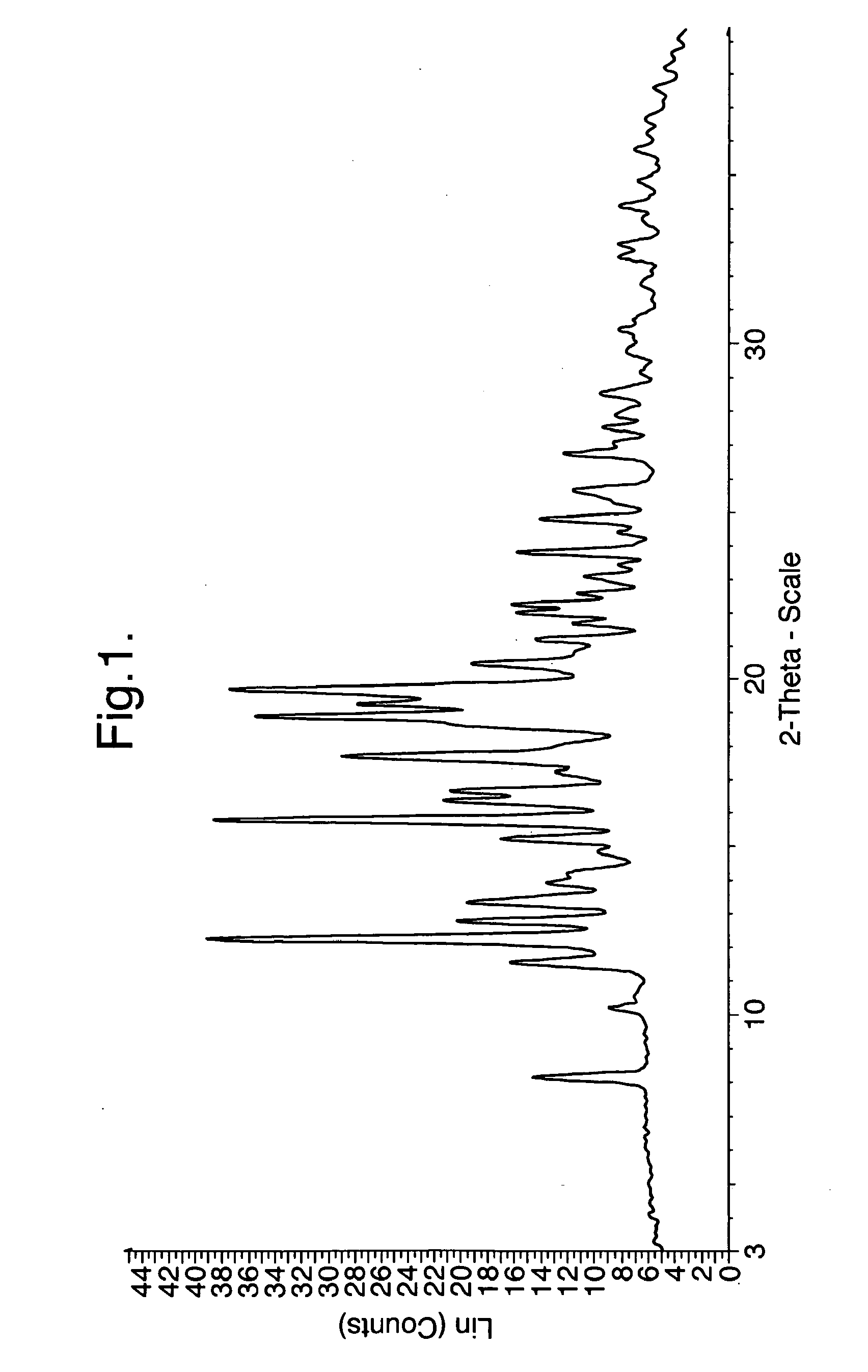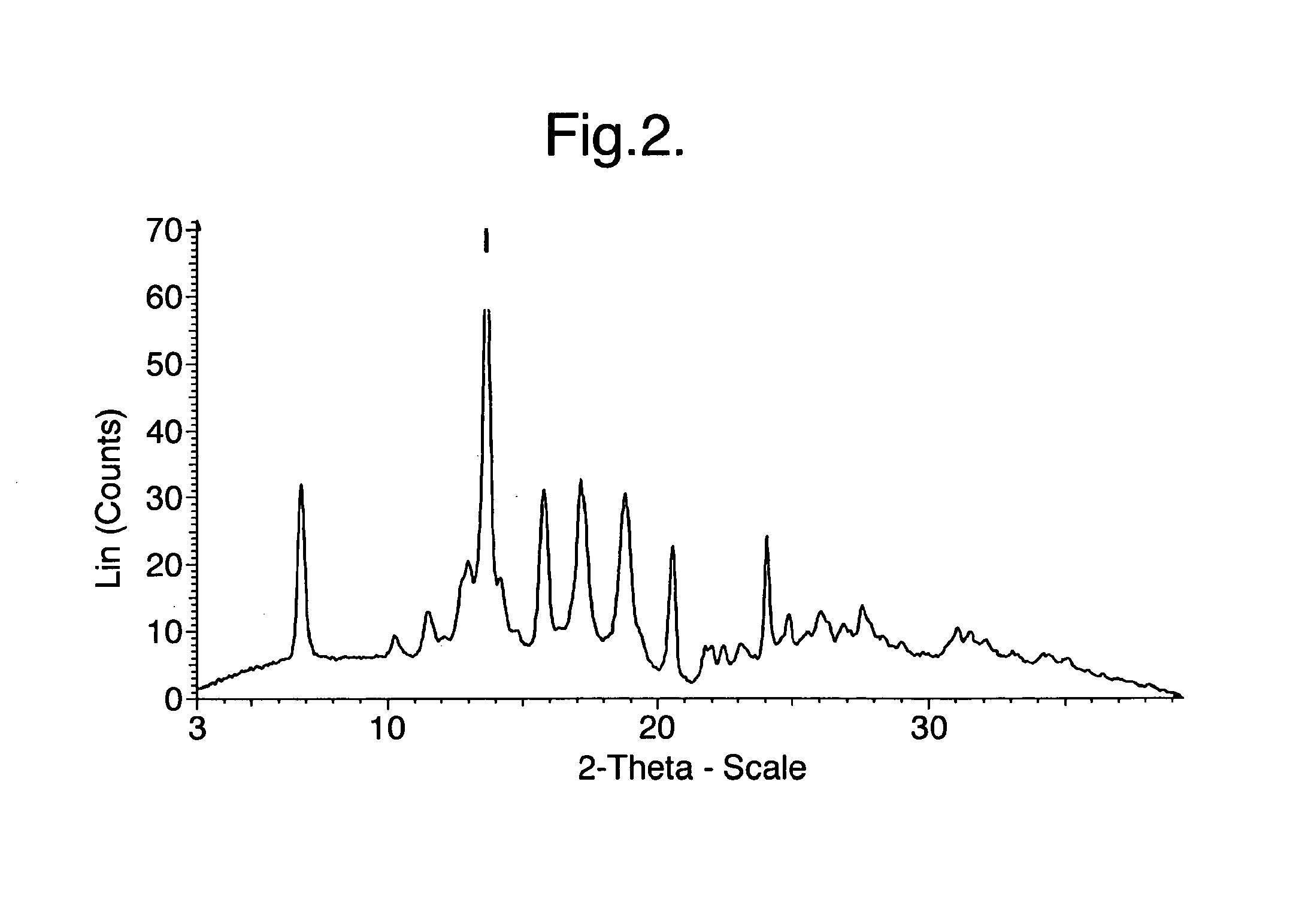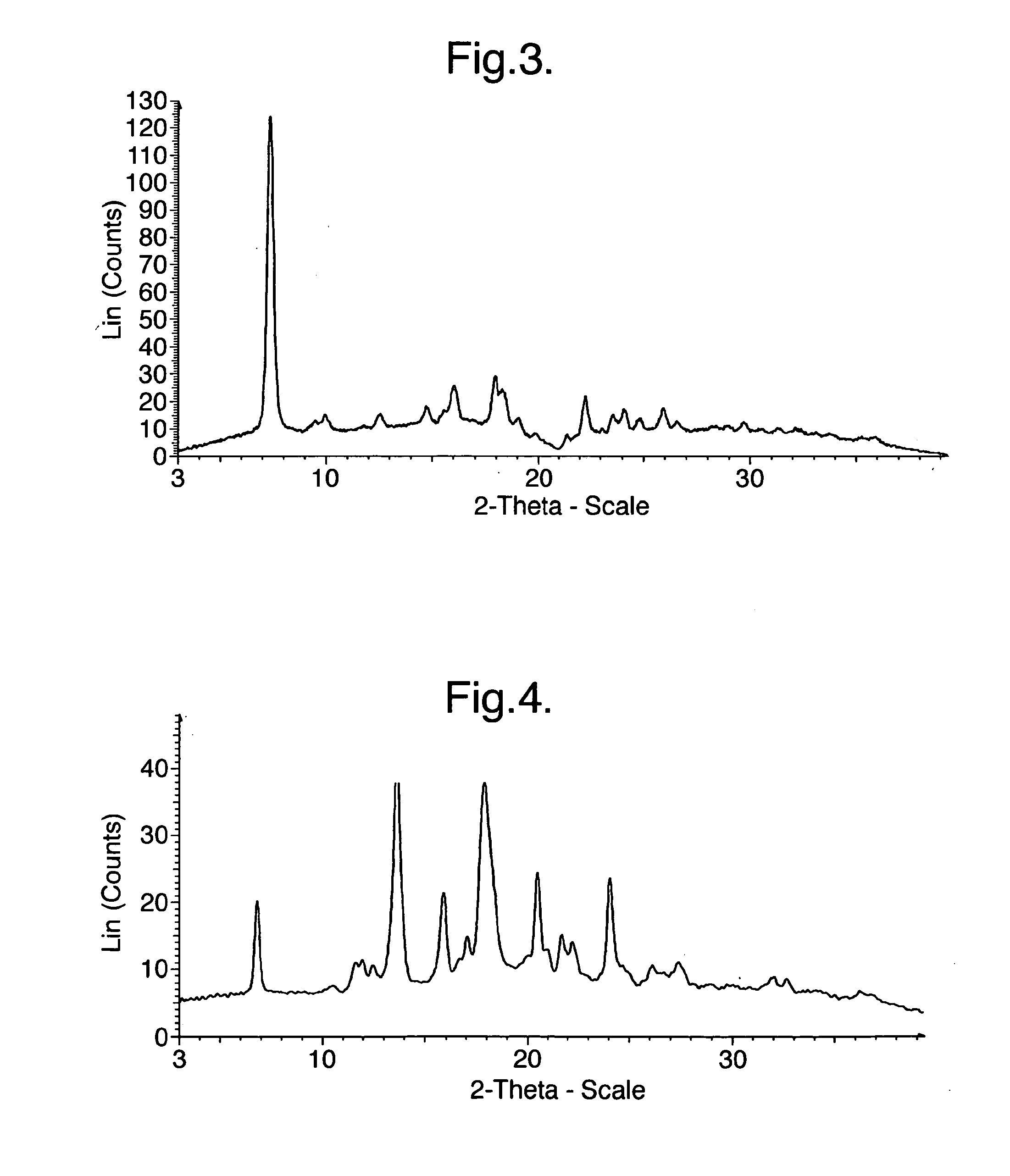New salts
a technology of salts and salts, applied in the field of new salts, can solve the problems of chemical impureness, difficult handling and formulation, and amorphous drug materials may present problems, and achieve the effect of rapid onset of activity and low toxicity
- Summary
- Abstract
- Description
- Claims
- Application Information
AI Technical Summary
Benefits of technology
Problems solved by technology
Method used
Image
Examples
example 1
Preparation of the Crystalline Form A of the Hydrochloride Salt of 1-(4-{1-[(E)-4-Cyclohexyl-3-trifluoromethyl-benzyloxyimino]-ethyl}-2-ethyl-benzyl)-azetidine-3-carboxylic acid (Compound I)
Method 1
[0186]The free base of Compound I (100 mg) and 1N HCL (193.5 up were added to 1 mL of ethanol. The resultant solution was stirred for 72 hours. Acetonitrile (2 mL) was then added and the solution was stirred overnight. The white solid precipitate was collected by vacuum filtration.
Method 2
[0187]The free base of Compound I (200 mg) and 1 N HCl (387 μL) were added to 2 ml ethanol. Once the free base of Compound I had dissolved, the solution was evaporated to dryness and formed an amorphous glass. Acetonitrile (4 mL) was added to the amorphous glass product in aliquots while sonicating in a warm water bath for 20 minutes. The resultant solution was then left to stir overnight and the white solid product formed was collected by vacuum filtration.
Analysis of Crystalline Form A of the Hydroch...
example 2
Preparation of the Crystalline Form A of the Malate Salt of 1-(4-{1-[(E)-4-Cyclohexyl-3-trifluoromethyl-benzyloxyimino]-ethyl}-2-ethyl-benzyl)-azetidine-3-carboxylic acid (Compound I)
[0189]Solid malic acid (26 mg) and the free base of Compound I (100 mg) were added to 1 mL of ethanol. The solution was stirred for 72 hours and was then evaporated to dryness by nitrogen gas flow to form amorphous glass. Acetonitrile (2 mL) was added to the amorphous glass and the resultant white solid was collected by vacuum filtration.
[0190]XRPD analysis indicated that the product was Crystalline Form A of the malate salt of 1-(4-(1-[(E)-4-Cyclohexyl-3-trifluoromethyl-benzyloxyimino]-ethyl}-2-ethyl-benzyl)-azetidine-3-carboxylic acid (Compound I), having the most prominent peaks shown in Table 2 above and an XRPD trace as shown in FIG. 2.
example 3
Preparation of the Crystalline Form A of the Oxalate Salt of 1-(4-{1-[(E)-4-Cyclohexyl-3-trifluoromethyl-benzyloxyimino]-ethyl}-2-ethyl-benzyl)-azetidine-3-carboxylic acid (Compound I)
[0191]The free base of Compound I (100 mg) and oxalic acid (17.43 mg) were dissolved in 1 mL of ethanol. The solution was stirred for 72 hours and the precipitate formed was collected by vacuum filtration.
[0192]XRPD analysis indicated that the product was Crystalline Form A of the oxalate salt of 1-(4-{1-[(E)-4-Cyclohexyl-3-trifluoromethyl-benzyloxyimino]-ethyl}-2-ethyl-benzyl)-azetidine-3-carboxylic acid (Compound I), having the most prominent peaks shown in Table 3 above and an XRPD trace as shown in FIG. 3.
PUM
| Property | Measurement | Unit |
|---|---|---|
| degree of crystallinity | aaaaa | aaaaa |
| degree of crystallinity | aaaaa | aaaaa |
| degree of crystallinity | aaaaa | aaaaa |
Abstract
Description
Claims
Application Information
 Login to View More
Login to View More - R&D
- Intellectual Property
- Life Sciences
- Materials
- Tech Scout
- Unparalleled Data Quality
- Higher Quality Content
- 60% Fewer Hallucinations
Browse by: Latest US Patents, China's latest patents, Technical Efficacy Thesaurus, Application Domain, Technology Topic, Popular Technical Reports.
© 2025 PatSnap. All rights reserved.Legal|Privacy policy|Modern Slavery Act Transparency Statement|Sitemap|About US| Contact US: help@patsnap.com



